Zoro Feigl “He has transcended his bad boy image.” Interview Ellis Kat - curator of Zonvonkengesproei
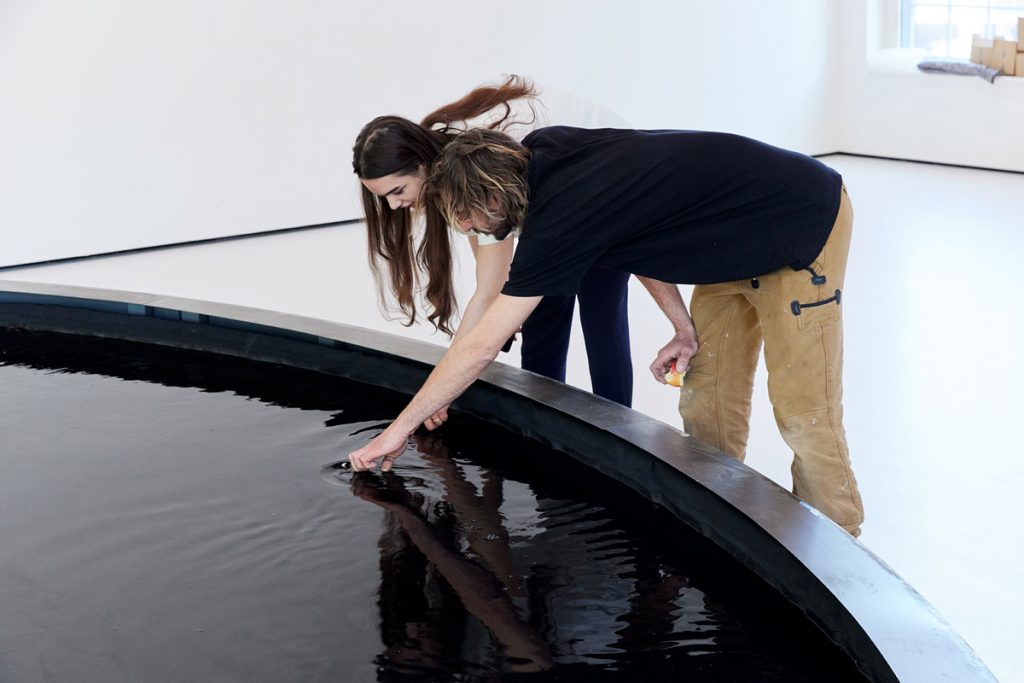
When you say Zoro Feigl, you say installations that roar and writhe, at the same time beautiful and terrifying. Machines that simultaneously intimidate and calm the viewer. Abysses (2020), the installation that the Fred&Ferry gallery is showing at Art Rotterdam, is therefore a typical Zoro Feigl. You keep staring breathlessly at the black liquid in the large steel cylinder that suddenly forms a whirlpool, then comes to a halt again, only to start flowing again. A choreography that the viewer can barely get a grip on. Only afterwards do you think: would he have come up with the idea through the whirlpool you see when you empty kitchen sink?
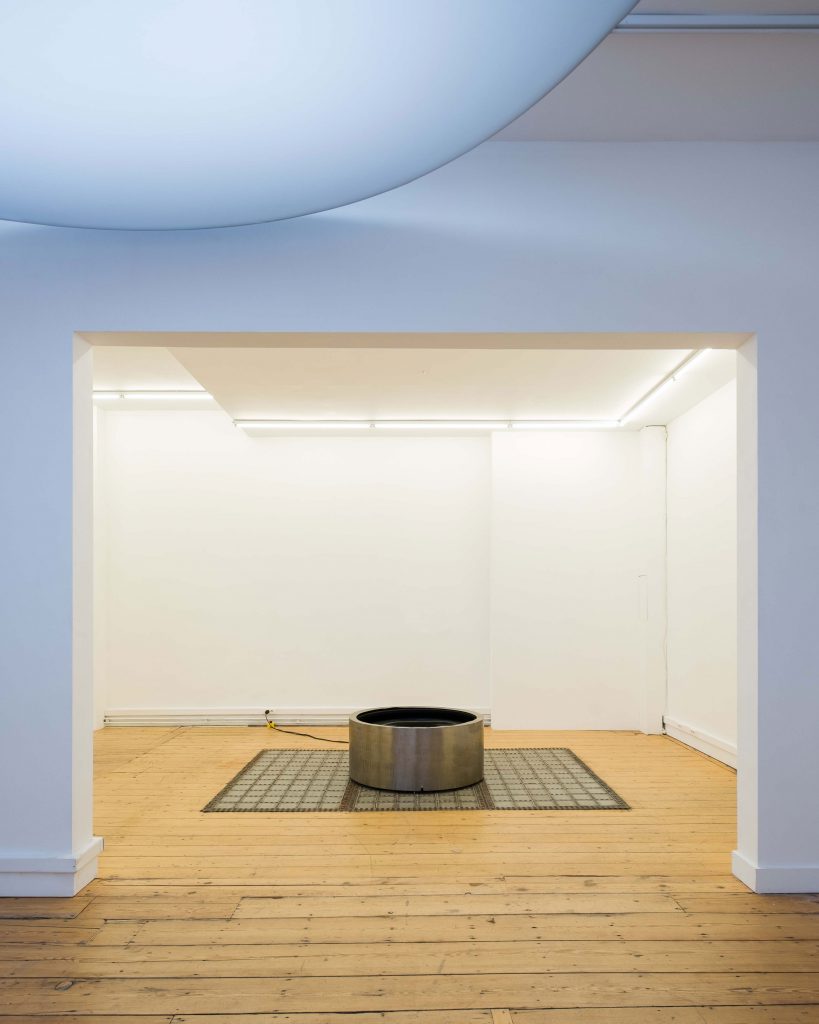
Zoro Feigl (NL 1983) has his office in Amsterdam, but works in the Belgian Kempen region where he has a large outdoor studio. Space is essential for Feigl, as his installations are usually large and noisy. Feigl has always had a fascination for 'how things are put together'. Only later did he realize that this had to do with art. Initially, he studied design in Utrecht, and enjoyed himself there, but got stuck because he didn't stick to the instructions of his teachers. He ended up at the Rietveld Academy, where he graduated in 2007. In 2011, he followed a further education at the HISK in Ghent. His work has already been shown at Art Rotterdam, where he won the prize for the best presentation at Intersections in 2015.
On Saturday 14 May, Feigl's solo exhibition Zonvonkengesproei will open in the Stedelijk Museum Schiedam, a stone's throw from the Van Nelle Factory. The museum opens its doors after a thorough renovation that lasted two years. Ellis Kat is involved in Zonvonkengesproei as a curator and talks about the effect the newly renovated museum had on Feigl's work, his method and the ideas behind his work.
You have built up the exhibition over the past few days. Is that different with Zoro's machines than with an exhibition with two-dimensional works?
Past days?! Past weeks, you mean. Due to the size and complexity of the installations, a large team spent weeks building it up. In fact, work on this exhibition started about three years ago. Initially, Zoro's solo exhibition was planned just before the renovation. He was given a license to use the spaces as he wished, as the museum would be renovated afterwards anyway. Everything was cut and dried, the works were ready for transport and then the lockdown followed. It was decided to renovate first and postpone the exhibition.
A big difference in curating this exhibition compared to an exhibition with two-dimensional works is that paintings are usually completed in the studio, transported to the museum where they are unpacked and hung. Now every installation was actually made in the museum itself. Zoro's studio in Belgium is large, but an eighteen meter long installation such as Getij cannot be completely built there. So the Stedelijk Museum Schiedam actually functioned as Zoro's studio for weeks. Only there and then did it become clear how it all came together.
In some cases Zoro made a smaller version of a work in his studio, such as the work Fosfenen, which consists of countless moving mirrors that reflect in space. He first showed me that version in his studio amid the clutter and in the semi-darkness. In the museum it really comes into its own and I saw the magic of the end result.
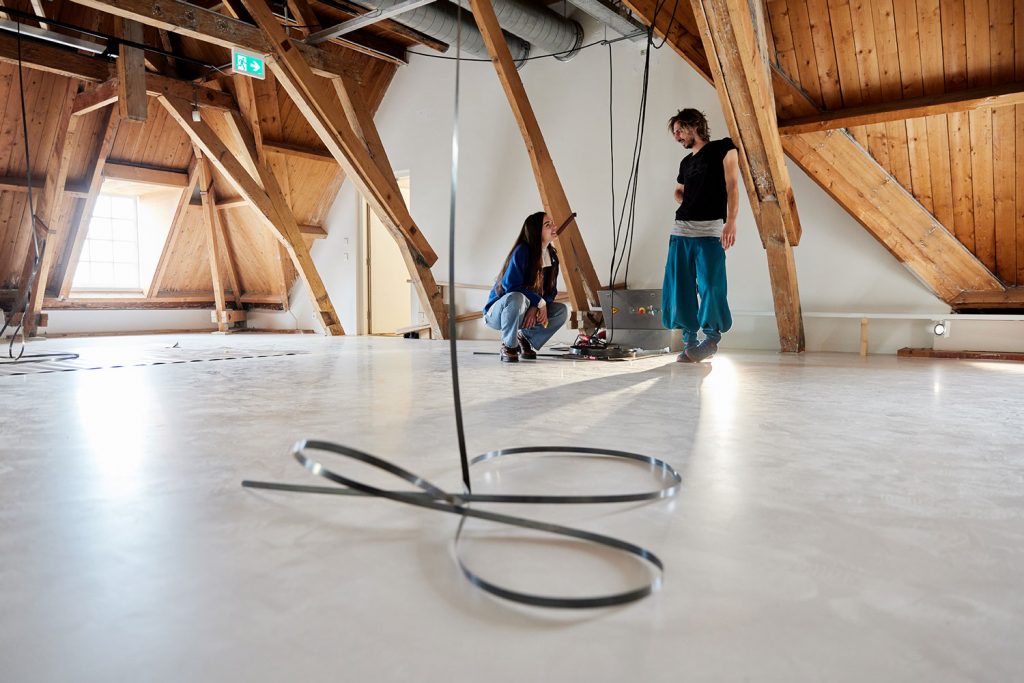
Is curating an exhibition like this different from a 'normal' exhibition?
I'm afraid a normal exhibition doesn't really exist. Zonvonkengesproei is a special exhibition to curate. More than ever I have learned that the place where an exhibition takes place plays a fundamental role. At first we were in the midst of the renovation, during which he was given carte blanche to demolish the museum. Now, Zoro was obliged to act neatly; he not only ensures that the new building is not damaged, but with his art he knows how to unlock the new elements in the halls for the visitor. It has become a completely different exhibition. Due to these circumstances, Zoro had to work very carefully and he has shaken off the bad boy image. When you think of his installations, you envision robust, twisting, spinning machines. Now I have seen how ingenious, concentrated and skilful Zoro works. In retrospect, the pandemic is a gift to the renovated museum and Zoro's artistic development: they pull each other up.
The exhibition comprises six rooms. Do those rooms provide a survey of Zoro's work or are they six recent or new works?
It is almost all new work. Only Zwermen, an installation that the museum acquired in 2020, has been on display before. The works in Zonvonkengesproei mark a new step in Feigl's oeuvre. He has grown up. It remains kinetic work and it does make noise, but it was made with a lot of attention, so that the visitor also dares to give that attention to the works. He has managed to get to the core of his artistic practice.
The exhibition is called Zonvonkengesproei. What does that mean and why exactly does that term cover the charge?
That is a neologism, a non-existent word that comes from Herman Gorter's 1889 poem Mei. In the poem the girl Mei meets the love of her life, Balder. She is in ecstasy and directly projects her feelings onto the young god. It's such an overwhelming feeling that she can't quite put it into words and that's why she uses this word. Zoro's work evokes a similar overwhelming feeling. It's so all-encompassing that it's hard to describe.
What is the core of Zoro’s artistic practice you were talking about?
In his work Zoro tries to incorporate natural phenomena and everyday things in installations. Think of the behaviour of a flock of starlings, ripples in the sand in the surf or glowworms on your retina, which you see when you close your eyes for a long time. They are things that happen, but which we cannot influence. No human can control the way a flock of starlings moves in the sky, no matter how much we think we have power over nature. Zoro does try to seize these elusive situations and make them accessible in his work. Suddenly he takes control. Just for a moment, because when he turns on his installations, all the balls - the starlings, or the mirrors - the glowworms - all go in a direction that he could never have predicted himself. The work itself has come alive again. If you have seen his installations, hopefully when you exit the exhibition you will notice everyday things that you previously passed by.
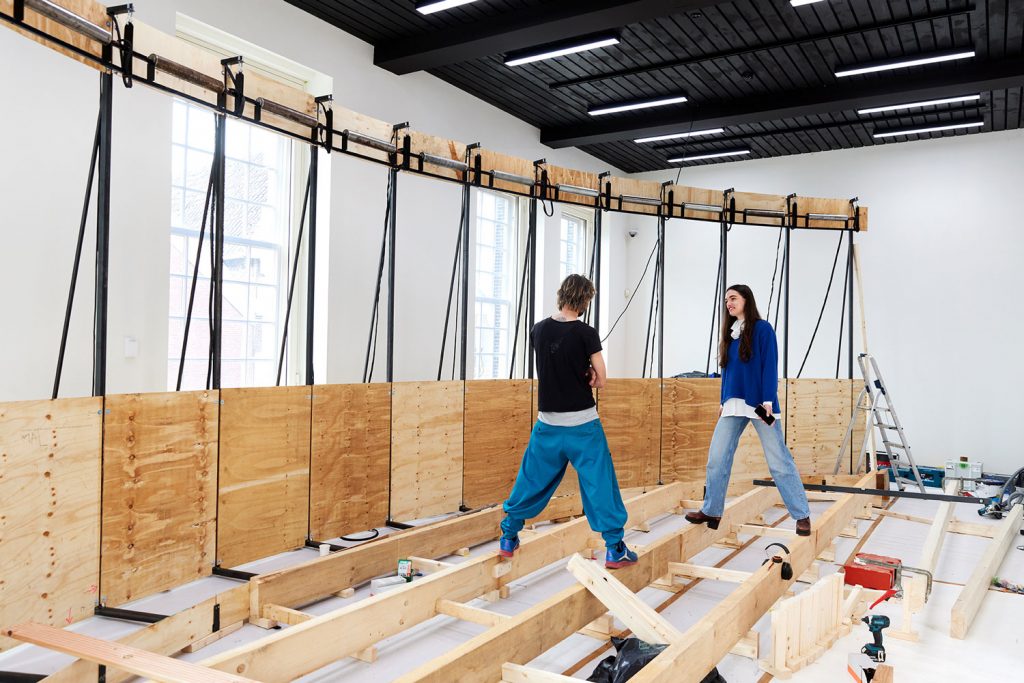
How does Zoro work? Does he start from an idea, a vision, or rather from material that he finds interesting?
Zoro has no set method. Some works, such as Floating Floor, are created by association. One evening, Zoro took the bag from a 5-litre carton of Aldi wine, squeezed it and watched the wine flow to other parts of the bag. A kind of waterbed effect. What if we have floors like this, he wondered. In Schiedam you can now walk on a parquet floor that is constantly sagging. Another example is the installation Lianen, which is displayed in the attic of the museum. This installation consists of four metal ribbons that are driven by motors and that wind continuously. Together they form a choreography. Like many of his installations, this one takes on a more human character the longer you look at it. The idea for Lianen was a package that was closed with tie-wraps, they flew away when he cut them open. This uncontrollable effect intrigued him and he tries to capture it in a work. However, the reason for a work can also be much more pragmatic. It also happens that a material has been wandering around in his studio for a long time, he keeps tripping over it and decides to use the material, so that it is finally cleaned up. Not having a set method ensures that Zoro is always open to play and accidental discoveries.
Zoro often uses classical mechanics in his work. Motorcycles in all shapes and sizes. Why does he use this rather dated technology?
Why does a painter use paint? I disagree that he uses outdated technology. Now that I had a look behind the scenes, I see how much modern technology is involved. An installation such as Getij consists of PCs at the back that control programmed choreographies of the bands. It is a combination of raw materials and modern techniques. The assumption that he only gets things from scrap to use in his work is patently incorrect. At times he spends weeks looking for a specific part of his installation to finish it exactly the way he envisioned. He received this time from the Stedelijk Museum Schiedam, so that he has transcended his bad boy image.
In articles about Zoro’s work you often read something like: if you have ever seen a work by Zoro, you will not soon forget it. Can you explain why his works leave such a strong impression?
That's Zonvonkengesproei; you can't quite put it into words. Let me not say too much about it: just come to the exhibition, then you can experience it for yourself.
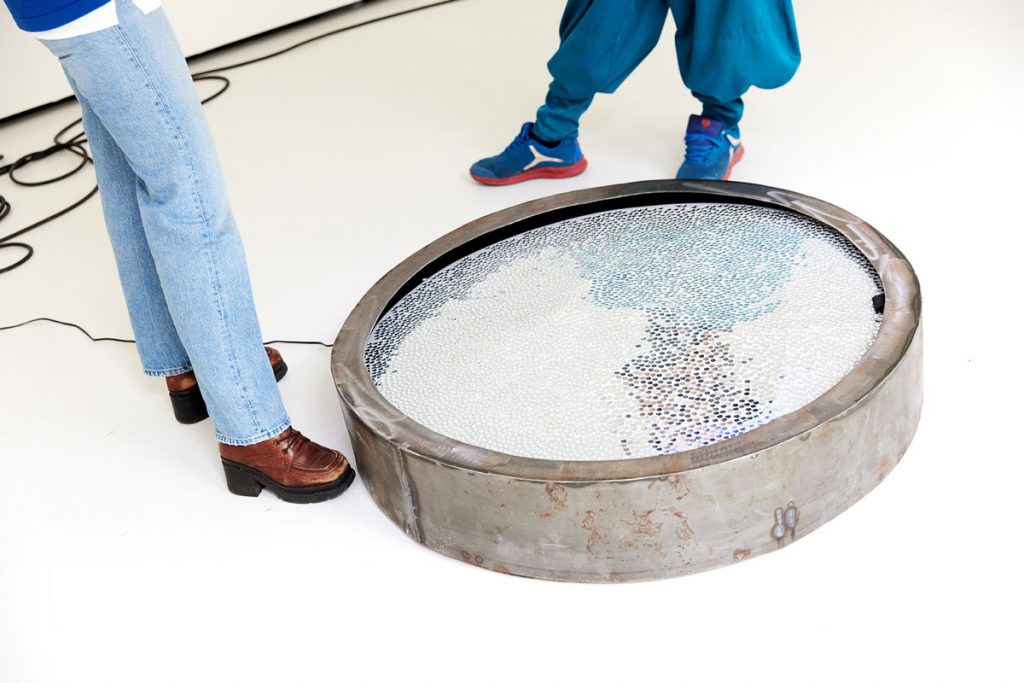
Abysses by Zoro Feigl can be seen at Art Rotterdam in the booth of Gallery Fred&Ferry.
The exhibition Zonvonkengesproei by Zoro Feigl can be seen from 14 May through 11 September in Stedelijk Museum Schiedam.


